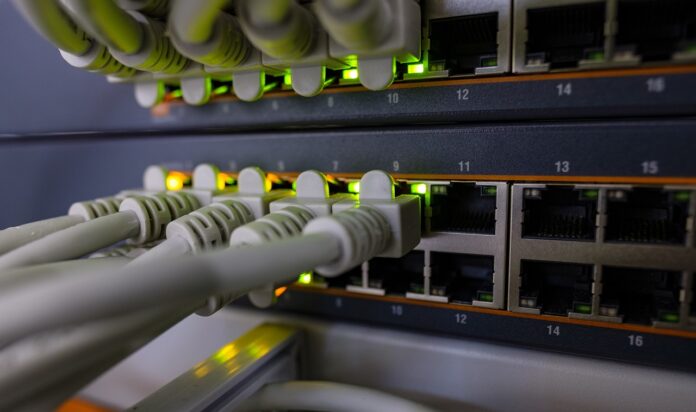Introduction: India’s Digital Gold Rush
With India’s internet users projected to reach 1 billion by 2026 and internet penetration growing at 8% annually, launching an Internet Service Provider (ISP) business presents a golden opportunity to bridge the digital divide while building a profitable enterprise. Whether you’re targeting urban fiber networks or rural wireless solutions, starting an ISP requires strategic planning, technical expertise, and compliance with India’s evolving regulatory framework.
This comprehensive guide walks you through every step—from understanding market dynamics to scaling operations—equipping you with the tools to build a thriving ISP business in 2025’s competitive landscape.
Table of Contents
- Understanding ISP Business Models
- Market Research and Opportunity Analysis
- Legal Requirements and Licensing
- Financial Planning and Investment
- Infrastructure Setup and Technology
- Business Registration and Compliance
- Network Architecture and Security
- Marketing and Customer Acquisition
- Operations and Customer Service
- Scaling and Growth Strategies
Step 1: Understanding ISP Business Models
Wired ISP Options
Fiber Optic (FTTH/FTTB)
- Pros: Ultra-high speeds (up to 1 Gbps), reliable, future-proof
- Cons: High infrastructure cost (₹15,000-25,000 per km)
- Best for: Urban areas, premium customers, business districts
- Investment: ₹50 lakh – ₹2 crore for local coverage
DSL (Digital Subscriber Line)
- Pros: Uses existing telephone lines, lower setup cost
- Cons: Speed limitations, distance-dependent performance
- Best for: Semi-urban areas with good telephone infrastructure
- Investment: ₹20-40 lakh for moderate coverage
Wireless ISP Options
Fixed Wireless (Point-to-Point/Point-to-Multipoint)
- Pros: Quick deployment, cost-effective for rural areas
- Cons: Weather dependent, line-of-sight requirements
- Best for: Rural communities, hilly terrain
- Investment: ₹15-30 lakh for 5-10 km radius
Satellite Internet
- Pros: Wide coverage, ideal for remote areas
- Cons: High latency, expensive bandwidth
- Best for: Remote villages, enterprise backup
- Investment: ₹25-50 lakh plus ongoing bandwidth costs
5G/4G Wireless
- Pros: High-speed mobile connectivity, emerging market
- Cons: Requires spectrum license, high competition
- Best for: Mobile-first markets, IoT applications
- Investment: ₹1-5 crore depending on coverage area
Step 2: Market Research and Opportunity Analysis
Conducting Effective Market Research
Competitive Analysis
- Map existing ISPs in your target area (Jio, Airtel, ACT Fibernet, local players)
- Analyze pricing: Basic plans (₹399-699/month), Premium (₹999-1499/month)
- Identify service gaps: poor customer service, limited coverage, speed issues
Demand Assessment
- Survey potential customers about current internet satisfaction
- Identify underserved segments: residential complexes, small businesses, rural areas
- Calculate market size: households × average monthly spend × penetration rate
Target Market Identification
Urban Opportunities
- New residential developments lacking fiber connectivity
- Small businesses requiring dedicated bandwidth
- Gaming and streaming enthusiasts needing low-latency connections
Rural Opportunities
- Villages under BharatNet Phase 2 requiring last-mile connectivity
- Agricultural areas needing IoT and digital payment solutions
- Educational institutions requiring reliable internet for online learning
Market Research Tools
- TRAI quarterly reports for industry data
- Census data for demographic analysis
- Google Trends for search behavior insights
- Local surveys via WhatsApp groups or community meetings
Step 3: Legal Requirements and Licensing in India
Unified License from Department of Telecommunications (DoT)
License Categories and Costs
Category A (Pan-India)
- Coverage: Entire country
- License fee: ₹15 lakh
- Performance Bank Guarantee: ₹10 crore
- Best for: Large-scale operations
Category B (State/Metro)
- Coverage: State or metropolitan area
- License fee: ₹7.5 lakh
- Performance Bank Guarantee: ₹5 crore
- Best for: Regional ISPs
Category C (Secondary Switching Area)
- Coverage: Local area (typically district level)
- License fee: ₹1 lakh
- Performance Bank Guarantee: ₹50 lakh
- Best for: Local ISPs and startups
License Application Process
- Prepare Documentation
- Company registration certificate
- Memorandum and Articles of Association
- Financial statements and bank guarantees
- Technical plan and network architecture
- Expected timeline for service launch
- Submit Application via Saral Sanchar Portal
- Create account on DoT’s online portal
- Upload required documents
- Pay application fees online
- Track application status
- Technical Evaluation
- DoT reviews technical feasibility
- Site verification if required
- Compliance check with TRAI regulations
- License Approval Timeline
- Category C: 60-90 days
- Category B: 90-120 days
- Category A: 120-180 days
Additional Compliance Requirements
TRAI Regulations
- Quality of Service (QoS) parameters compliance
- Tariff transparency and consumer protection
- Interconnection agreements with other operators
- Regular reporting and audit requirements
Other Permits
- Municipal corporation NOC for infrastructure deployment
- Pollution Control Board clearance for tower installations
- Fire department approval for equipment rooms
- Electricity board approval for power connections
Step 4: Financial Planning and Investment
Startup Cost Breakdown
Small-Scale Wireless ISP (500 customers)
- Licensing and legal: ₹3-5 lakh
- Network equipment: ₹15-25 lakh
- Installation and setup: ₹8-12 lakh
- Working capital: ₹10-15 lakh
- Total: ₹36-57 lakh
Medium-Scale Fiber ISP (2,000 customers)
- Licensing and legal: ₹8-12 lakh
- Fiber infrastructure: ₹60-80 lakh
- Network equipment: ₹25-40 lakh
- Installation and setup: ₹20-30 lakh
- Working capital: ₹25-35 lakh
- Total: ₹1.38-1.97 crore
Revenue Models and Pricing Strategy
Residential Plans
- Basic (50 Mbps): ₹499-699/month
- Standard (100 Mbps): ₹799-999/month
- Premium (200+ Mbps): ₹1,299-1,799/month
Business Plans
- Small office (Dedicated 10 Mbps): ₹2,999-4,999/month
- Medium enterprise (50 Mbps): ₹8,999-12,999/month
- Large enterprise (100+ Mbps): Custom pricing
Value-Added Services
- Static IP addresses: ₹299-599/month
- Cloud backup services: ₹199-499/month
- IPTV packages: ₹299-799/month
- Security services: ₹499-999/month
Funding Options
Government Schemes
- Startup India: Tax benefits and easier compliance
- Digital India: Grants for rural connectivity projects
- Mudra Loans: Up to ₹10 lakh for micro-enterprises
- Stand-Up India: Loans up to ₹1 crore for SC/ST/Women entrepreneurs
Private Funding
- Bank loans: 10-14% interest rates
- NBFC financing: Equipment financing options
- Angel investors: Equity-based funding for tech startups
- Venture capital: For scalable business models
Break-Even Analysis
- Average customer revenue: ₹800/month
- Customer acquisition cost: ₹2,000-3,000
- Monthly operational cost per customer: ₹200-300
- Break-even timeline: 18-24 months with proper execution
Step 5: Infrastructure Setup and Technology
Core Network Equipment
Essential Hardware
For Fiber ISP
- Optical Line Terminal (OLT): ₹5-15 lakh
- Optical Network Units (ONUs): ₹2,000-5,000 each
- Fiber optic cables: ₹20-40 per meter
- Fusion splicer: ₹3-8 lakh
- Core routers (Cisco, MikroTik): ₹2-10 lakh
For Wireless ISP
- Base stations: ₹50,000-2 lakh each
- Point-to-point radios: ₹15,000-50,000 per link
- Sector antennas: ₹5,000-25,000 each
- Tower infrastructure: ₹2-5 lakh per site
- Customer premises equipment: ₹3,000-8,000 each
Software Systems
- Network Management System: ₹2-8 lakh annually
- Billing and customer management: ₹50,000-3 lakh
- Bandwidth monitoring tools: ₹1-5 lakh annually
- Customer support ticketing: ₹25,000-1 lakh annually
Vendor Partnerships
International Equipment Vendors
- Nokia: Fiber and 5G solutions
- Huawei: Cost-effective network equipment
- Cisco: Enterprise-grade networking
- Cambium Networks: Wireless connectivity solutions
Indian Equipment Manufacturers
- Tejas Networks: Indigenous fiber solutions
- HFCL: Optical fiber cables and equipment
- Railtel: Railway corridor connectivity
- BSNL: Infrastructure sharing partnerships
Network Architecture Design
Three-Layer Architecture
Core Layer
- High-capacity routers and switches
- Redundant connections to internet gateways
- Traffic aggregation and routing
- Located in main Point of Presence (PoP)
Distribution Layer
- Area-wise traffic distribution
- Load balancing across multiple links
- Service aggregation points
- Located in neighborhood PoPs
Access Layer
- Last-mile connectivity to customers
- Customer premises equipment
- Local traffic management
- Individual household/business connections
Step 6: Business Registration and Compliance
Company Registration Process
- Choose Business Structure
- Private Limited Company: Best for ISP business
- Limited Liability Partnership: Good for partnerships
- One Person Company: Suitable for solo entrepreneurs
- Register with MCA
- Obtain Digital Signature Certificate (DSC)
- Get Director Identification Number (DIN)
- Reserve company name
- File incorporation documents
- Post-Registration Compliance
- Open current bank account
- Register for GST (18% on internet services)
- Obtain PAN and TAN
- Register with EPFO and ESIC for employees
Regulatory Compliance Framework
TRAI Compliance
- Submit quarterly performance reports
- Maintain quality of service standards
- Follow consumer protection guidelines
- Implement tariff transparency measures
DoT Compliance
- Annual license fee payment (8% of adjusted gross revenue)
- Spectrum usage charges (if applicable)
- Universal Service Obligation levy (5% of AGR)
- Security clearance for equipment and personnel
Local Compliance
- Municipal permissions for cable laying
- Right of way permissions for infrastructure
- Environmental clearances for towers
- Fire safety certificates for equipment rooms
Step 7: Network Security and Management
Cybersecurity Measures
Network Security Infrastructure
- Firewall systems: ₹2-10 lakh for enterprise-grade
- DDoS protection services: ₹50,000-2 lakh annually
- Intrusion Detection Systems: ₹1-5 lakh
- VPN services for remote management: ₹25,000-1 lakh
Data Protection Compliance
- Personal Data Protection Bill compliance
- Customer data encryption and storage
- Regular security audits and penetration testing
- Staff training on cybersecurity best practices
Network Monitoring and Management
Performance Monitoring
- 24/7 Network Operations Center (NOC)
- Real-time bandwidth monitoring
- Proactive fault detection and resolution
- Service level agreement (SLA) compliance tracking
Customer Management Systems
- Self-service customer portal
- Mobile app for bill payment and support
- Automated billing and payment processing
- Customer relationship management (CRM) integration
Step 8: Marketing and Customer Acquisition
Digital Marketing Strategy
Online Presence
- Professional website with service plans and coverage maps
- Search Engine Optimization for local keywords
- Google Ads campaigns targeting local internet searches
- Social media presence on Facebook, Instagram, and YouTube
Content Marketing
- Blog posts about internet technology and tips
- YouTube videos showcasing installation process
- Customer testimonials and case studies
- Local community group engagement
Traditional Marketing Approaches
Community Engagement
- Participation in local events and exhibitions
- Partnerships with housing societies and RWAs
- Referral programs with existing customers
- Local newspaper advertisements and radio spots
Door-to-Door Sales
- Trained sales team for residential areas
- Business development for commercial clients
- Demonstration of speed and reliability
- Competitive pricing comparisons
Customer Acquisition Strategies
Promotional Offers
- Free installation for first 100 customers
- First month free trial periods
- Bundled packages with value-added services
- Corporate discounts for bulk connections
Partnership Channels
- Real estate developers for new projects
- Local computer shops for referrals
- Educational institutions for campus connectivity
- Small business associations for commercial clients
Step 9: Operations and Customer Service Excellence
Customer Support Infrastructure
Multi-Channel Support
- 24/7 helpline with local language support
- WhatsApp Business for quick queries
- Email support with 4-hour response SLA
- Live chat on website and mobile app
Field Service Management
- Technical support team with local presence
- Same-day resolution for critical issues
- Preventive maintenance scheduling
- Remote diagnostics and troubleshooting
Service Quality Management
Performance Metrics
- Network uptime target: 99.5% or higher
- Average response time: Under 4 hours
- Customer satisfaction score: Above 4.5/5
- Net Promoter Score: Target above 50
Continuous Improvement
- Regular customer feedback surveys
- Monthly service quality reviews
- Staff training on technical and soft skills
- Investment in network upgrades and expansion
Billing and Revenue Management
Billing System Features
- Automated monthly billing generation
- Multiple payment options (UPI, cards, cash)
- Proration for partial month services
- Integration with accounting software
Revenue Optimization
- Dynamic pricing based on usage patterns
- Upselling opportunities for higher-speed plans
- Cross-selling value-added services
- Customer lifetime value maximization
Step 10: Scaling and Growth Strategies
Expansion Planning
Geographic Expansion
- Phase-wise coverage area expansion
- Market analysis for adjacent territories
- Infrastructure sharing with other operators
- Acquisition of smaller local ISPs
Service Portfolio Expansion
- IPTV and OTT content partnerships
- IoT solutions for smart homes and businesses
- Cloud services and data backup solutions
- Cybersecurity services for enterprises
Technology Evolution
Emerging Technologies for 2025
- 5G integration for enhanced mobile services
- Wi-Fi 6/6E for improved wireless performance
- Software-Defined Networking (SDN) for flexibility
- Artificial Intelligence for network optimization
Future-Proofing Investments
- Fiber infrastructure for long-term scalability
- Edge computing capabilities
- Green energy solutions for sustainability
- Automation tools for operational efficiency
Common Challenges and Risk Mitigation
Major Business Risks
High Competition
- Risk: Established players with deep pockets
- Mitigation: Focus on underserved niches, superior customer service
Regulatory Changes
- Risk: New compliance requirements, license modifications
- Mitigation: Active participation in industry associations, legal counsel
Technical Failures
- Risk: Network outages, equipment failures
- Mitigation: Redundant systems, preventive maintenance, insurance coverage
Cash Flow Issues
- Risk: High upfront investment, delayed customer payments
- Mitigation: Conservative growth, diversified revenue streams, credit policies
Success Factors
Key Performance Indicators
- Customer acquisition rate: 50+ new customers per month
- Customer churn rate: Below 5% monthly
- Average revenue per user (ARPU): ₹800-1,200
- Network utilization: 60-80% of capacity
Critical Success Factors
- Strong local market knowledge and relationships
- Reliable technology infrastructure and vendor partnerships
- Excellent customer service and technical support
- Financial discipline and sustainable growth approach
Frequently Asked Questions (FAQs)
Q: How much does it cost to start an ISP in India? A: Costs range from ₹35 lakh for small wireless ISPs to ₹2+ crore for fiber-based operations, depending on coverage area and technology choice.
Q: What licenses are required to operate an ISP? A: Unified License from DoT (Category A/B/C based on coverage), along with various local permits and TRAI compliance.
Q: How long does it take to get an ISP license? A: 60-180 days depending on license category, with Category C being fastest and Category A taking longest.
Q: Can I start an ISP business part-time? A: While possible initially, ISP business requires full-time commitment due to customer service demands and technical complexity.
Q: What’s the typical break-even timeline? A: 18-24 months with proper execution, depending on customer acquisition rate and operational efficiency.
Essential Resources and Tools
Government Resources
- Department of Telecommunications (DoT): dot.gov.in
- TRAI (Telecom Regulatory Authority): trai.gov.in
- Saral Sanchar Portal: saralsanchar.gov.in
- Ministry of Electronics & IT: meity.gov.in
Industry Tools
- Network Management: SolarWinds, PRTG Network Monitor
- Billing Software: FreshBooks, Zoho Books
- Customer Support: Zendesk, Freshdesk
- Market Research: Statista, TRAI quarterly reports
Professional Networks
- Internet Service Providers Association of India (ISPAI)
- Broadband India Forum (BIF)
- Voice & Data Magazine community
- Local ISP WhatsApp and Telegram groups
Conclusion: Building Your ISP Success Story
Starting an ISP business in India’s rapidly growing digital economy offers tremendous opportunities for entrepreneurs willing to navigate the technical and regulatory complexities. Success requires careful planning, adequate funding, strong technical expertise, and unwavering commitment to customer service excellence.
The key to thriving in this competitive market lies in identifying underserved niches, building reliable infrastructure, and maintaining operational efficiency while scaling sustainably. With India’s internet user base continuing to grow and demand for high-speed connectivity increasing across urban and rural areas, well-executed ISP ventures can achieve both social impact and commercial success.
Ready to launch your ISP business? Start with thorough market research in your target area, connect with equipment vendors for technical guidance, and consult with telecommunications lawyers for licensing support. The digital revolution in India is just beginning—your ISP could play a crucial role in connecting the next 100 million internet users.
For personalized guidance on starting your ISP business or to discuss specific technical requirements, connect with industry experts and leverage government schemes designed to promote digital infrastructure development across India.
📌Disclaimer: Licensing requirements, infrastructure costs, and regulatory guidelines for starting an ISP business may vary by region and over time. Readers are advised to cross-check with current government portals, telecom authorities, and legal advisors before proceeding.





